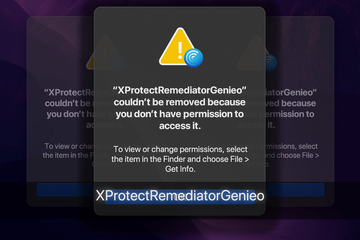Find out what XProtectRemediatorGenieo is on a Mac, why antivirus software might flag it as a threat, and how to resolve this issue.
What is XProtectRemediatorGenieo?
The built-in security mechanisms for macOS underwent changes over the past few years. The biggest tweak is that the long-standing Malware Removal Tool (MRT) retired in late April 2022. This has led to another native anti-malware component called XProtect taking over some of its now-obsolete companion’s duties to ensure the right level of defenses. Enhanced by Gatekeeper checks, this feature identifies potentially harmful code as it is being executed on a computer. The new approach has had a reflection in the system architecture. The XProtect bundle was created inside the following directory: /Library/Apple/System/Library/CoreServices. Aside from the security app itself, it includes a series of scanning modules collectively named XProtectRemediator. The former, in turn, contain binaries tasked with detecting specific strains of prevalent Mac malware, such as Trovi, Pirrit, and AdLoad. Among these binaries, there is one that’s causing problems and quite a bit of confusion for many users since recently. It’s called XProtectRemediatorGenieo, and it’s being detected as a threat by some antivirus apps. So what is it exactly, and why can it become an issue?
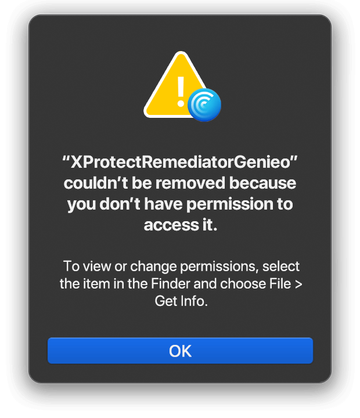
As the name suggests, "XProtect Remediator Genieo" is a module that harbors signatures and other details inherent to a Mac threat known as the Genieo adware. This is one of the oldest culprits of its kind that has brought together a number of obnoxious browser hijackers under its umbrella. When on board, it redirects a victim’s web browsers to search.genieo.com or another affiliated page designed as a run-of-the-mill search provider. In many cases, these rogue sites forward traffic to Yahoo, a tactic that has a twofold implication for the cybercriminals in charge. First, the incorporation of the legitimate provider in this controversial scheme gives those affected a false sense of normality. Second, the misconfigured browser resolves several in-between URLs before reaching the reputable destination, with those intermediaries being part of a monetization stratagem that involves APIs of advertising networks.
Genieo virus may re-infect your Mac multiple times unless you delete all of its fragments, including hidden ones. Therefore, it is recommended to download Combo Cleaner and scan your system for these stubborn files. This way, you may reduce the cleanup time from hours to minutes.
Download Now Learn how Combo Cleaner works. If the utility spots malicious code, you will need to buy a license to get rid of it.The current problem is that some third-party antivirus tools have started detecting XProtectRemediatorGenieo as something potentially harmful. This surge in alerts has a flavor of a false positives outbreak, as the benign scanning module in question is being wrongfully associated with the foul play of OSX/Genieo, a codename of the above-mentioned malware. That said, one theory is that security software mistakes the important system binary for the threat it’s supposed to pinpoint and remediate. This role switching most likely happens because the AV scanner’s logic interprets the occurrences of malware names as potential instances of the malware itself. Ideally, the detection approach should be enriched by additional data such as up-to-date signatures and behavioral patterns before the verdict can be made. One way or another, XProtectRemediatorGenieo appears to have found itself in the epicenter of an unjustified detection frenzy due to flawed algorithms of third-party security programs after their latest updates.
Another theory, albeit less plausible, is that a new variant of the actual Genieo adware payload has been trying to mimic the legitimate system binary under scrutiny to baffle macOS protection instruments. This reasoning isn’t as far-fetched as it may seem – malicious software can indeed attempt to pass itself off as something harmless and thereby fly under the radar. The only effective way to determine which scenario is the case is to implement thorough security checks. If the breadcrumbs of the real Genieo infection are spotted inside the Mac, they should be cleared without a second thought. Conversely, if the "XProtect Remediator Genieo" entity is being labeled dangerous erroneously, the user should ignore these alerts and check their antivirus program for an update that hopefully fixes the bug.
Fix XProtectRemediatorGenieo Mac issue manually
The steps listed below will walk you through the removal of this malicious application. Be sure to follow the instructions in the specified order.
Expand the Go menu in your Mac’s Finder bar and select Utilities as shown below.
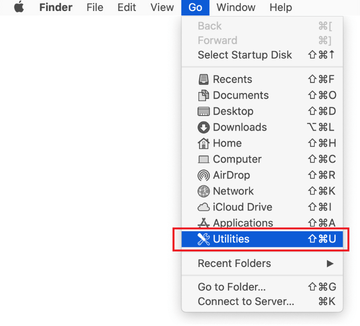
Locate the Activity Monitor icon on the Utilities screen and double-click on it.
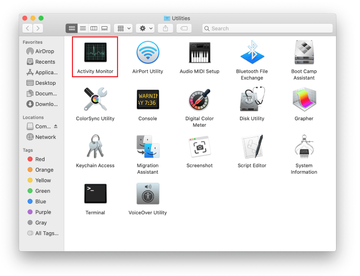
In the Activity Monitor app, look for a process that appears suspicious. To narrow down your search, focus on unfamiliar resource-intensive entries on the list. Keep in mind that its name isn’t necessarily related to the way the threat is manifesting itself, so you’ll need to trust your own judgement. If you pinpoint the culprit, select it and click on the Stop icon in the upper left-hand corner of the screen.
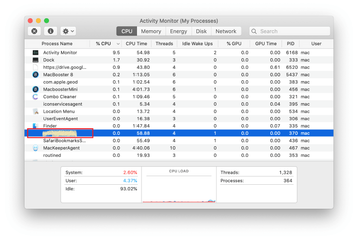
When a follow-up dialog pops up asking if you are sure you want to quit the troublemaking process, select the Force Quit option.
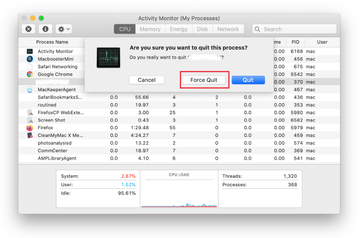
Click on the Go menu icon in the Finder again and select Go to Folder. You can as well use the Command-Shift-G keyboard shortcut.

Type /Library/LaunchAgents in the folder search dialog and click on the Go button.
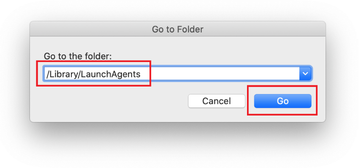
Examine the contents of the LaunchAgents folder for dubious-looking items. Be advised that the names of files spawned by malware may give no clear clues that they are malicious, so you should look for recently added entities that appear to deviate from the norm.
As an illustration, here are several examples of LaunchAgents related to mainstream Mac infections: com.updater.mcy.plist, com.avickUpd.plist, and com.msp.agent.plist. If you spot files that don’t belong on the list, go ahead and drag them to the Trash.
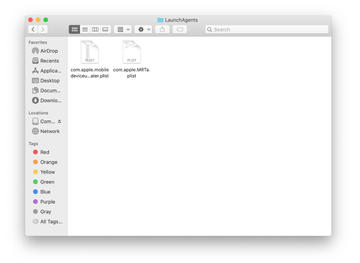
Use the Go to Folder lookup feature again to navigate to the folder named ~/Library/Application Support (note the tilde symbol prepended to the path).
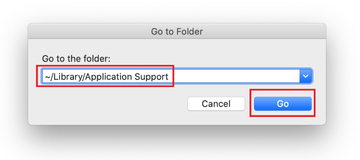
When the Application Support directory is opened, identify recently generated suspicious folders in it and send them to the Trash. A quick tip is to look for items whose names have nothing to do with Apple products or apps you knowingly installed. A few examples of known-malicious folder names are com.AuraSearchDaemon, ProgressSite and IdeaShared.
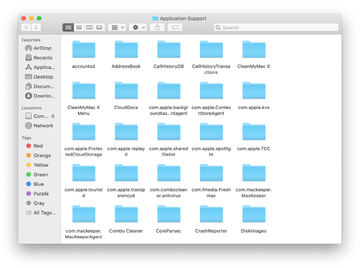
Enter ~/Library/LaunchAgents string (don’t forget to include the tilde character) in the Go to Folder search area.
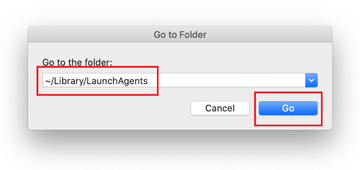
The system will display LaunchAgents residing in the current user’s Home directory. Look for dodgy items potentially related to XProtectRemediatorGenieo. A few examples are com.ConnectionCache.service.plist, com.digitalprotection.emcupdater.plist, com.mulkey.plist, com.nbp.plist, and com.sys.system.plist. Drag these files to the Trash.
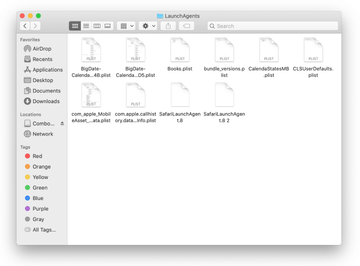
Type /Library/LaunchDaemons in the Go to Folder search field.
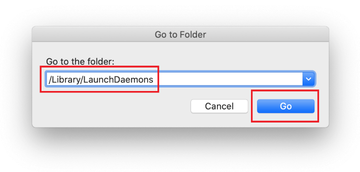
In the LaunchDaemons path, try to pinpoint the files the malware is using for persistence. Several examples of such items cropped by Mac infections are com.ConnectionCache.system.plist and com.mulkeyd.plist. Delete the sketchy files immediately.
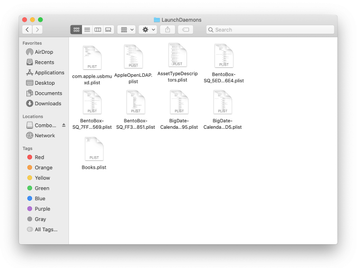
Click on the Go menu icon in your Mac’s Finder and select Applications on the list.

Find Genieo or another app that clearly doesn’t belong there and move it to the Trash. If this action requires your admin password for confirmation, go ahead and enter it.
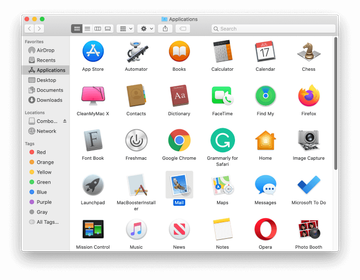
Expand the Apple menu and select System Preferences.
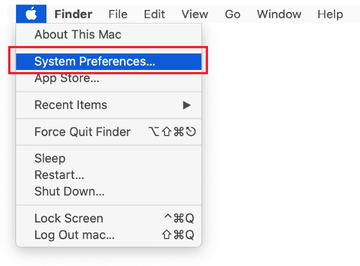
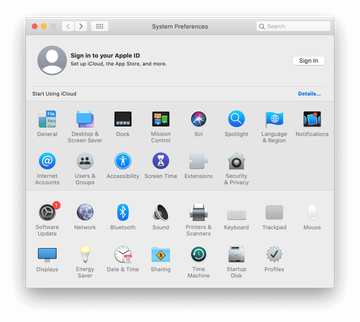
Proceed to Users & Groups and click on the Login Items tab.
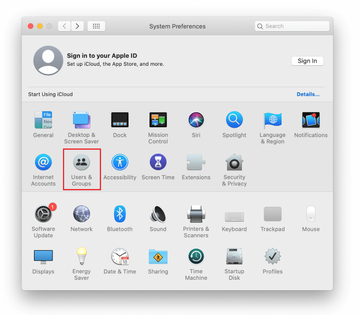
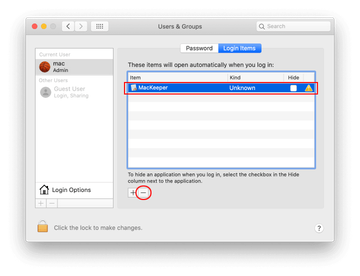
Now select Profiles under System Preferences. Look for a malicious item in the left-hand sidebar. Several examples of configuration profiles created by Mac adware include AdminPrefs, TechSignalSearch, MainSearchPlatform, and Safari Preferences. Select the offending entity and click on the minus sign at the bottom to eliminate it.
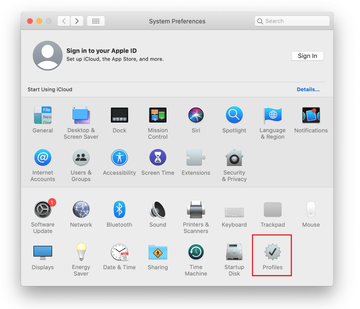
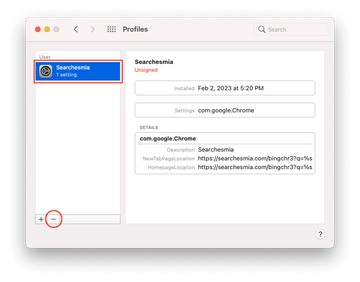
Get rid of Genieo virus in web browser on Mac
To begin with, the web browser settings taken over by the Genieo virus should be restored to their default values. Although this will clear most of your customizations, web surfing history, and all temporary data stored by websites, the malicious interference should be terminated likewise. The overview of the steps for completing this procedure is as follows:
- Remove Genieo virus from Safari
Open the browser and go to Safari menu. Select Preferences in the drop-down list.
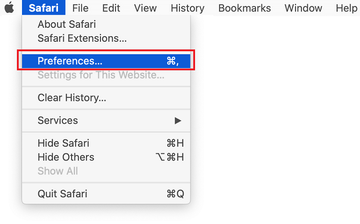
Once the Preferences screen appears, click on the Advanced tab and enable the option saying “Show Develop menu in menu bar”.
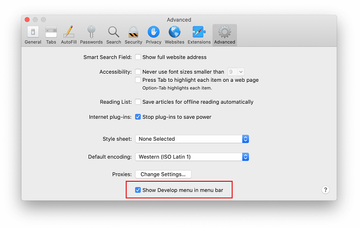
Now that the Develop entry has been added to the Safari menu, expand it and click on Empty Caches.
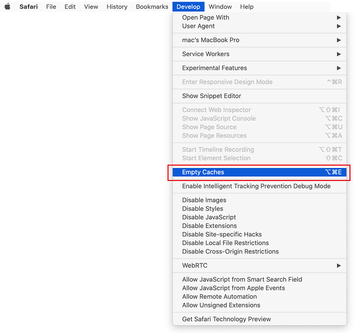
Now select History in the Safari menu and click on Clear History in the drop-down list.
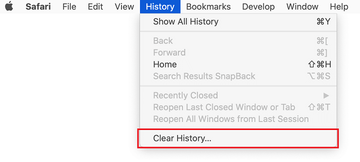
Safari will display a dialog asking you to specify the period of time this action will apply to. Select all history to ensure a maximum effect. Click on the Clear History button to confirm and exit.

Go back to the Safari Preferences and hit the Privacy tab at the top. Find the option that says Manage Website Data and click on it.

The browser will display a follow-up screen listing the websites that have stored data about your Internet activities. This dialog additionally includes a brief description of what the removal does: you may be logged out of some services and encounter other changes of website behavior after the procedure. If you’re okay with that, go ahead and click on the Remove All button.
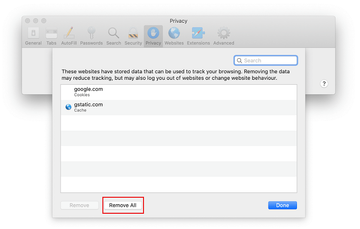
Restart Safari
- Remove Genieo in Google Chrome
Open Chrome, click the Customize and control Google Chrome (⁝) icon in the top right-hand part of the window, and select Settings in the drop-down
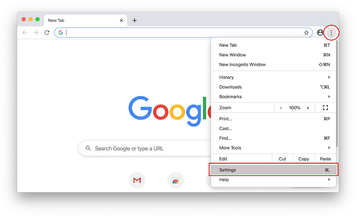
When on the Settings pane, select Advanced
Scroll down to the Reset settings section.
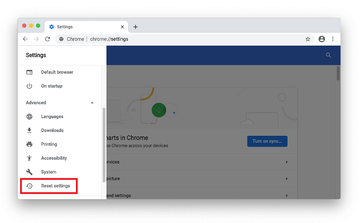
Confirm the Chrome reset on a dialog that will pop up. When the procedure is completed, relaunch the browser and check it for malware activity.
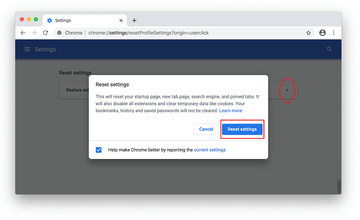
- Remove Genieo from Mozilla Firefox
Open Firefox and go to Help – Troubleshooting Information (or type about:support in the URL bar and press Enter).
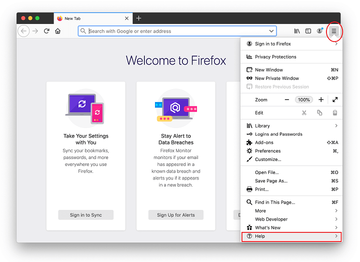

When on the Troubleshooting Information screen, click on the Refresh Firefox button.
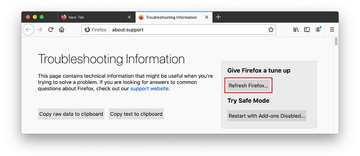
Confirm the intended changes and restart Firefox.
Get rid of XProtectRemediatorGenieo alert using Combo Cleaner removal tool
The Mac maintenance and security app called Combo Cleaner is a one-stop tool to detect and remove Genieo virus. This technique has substantial benefits over manual cleanup, because the utility gets hourly virus definition updates and can accurately spot even the newest Mac infections.
Furthermore, the automatic solution will find the core files of the malware deep down the system structure, which might otherwise be a challenge to locate. Here’s a walkthrough to sort out the Genieo issue using Combo Cleaner:
Download Combo Cleaner installer. When done, double-click the combocleaner.dmg file and follow the prompts to install the tool onto your Mac.
By downloading any applications recommended on this website you agree to our Terms and Conditions and Privacy Policy. The free scanner checks whether your Mac is infected. To get rid of malware, you need to purchase the Premium version of Combo Cleaner.
Open the app from your Launchpad and let it run an update of the malware signature database to make sure it can identify the latest threats.
Click the Start Combo Scan button to check your Mac for malicious activity as well as performance issues.
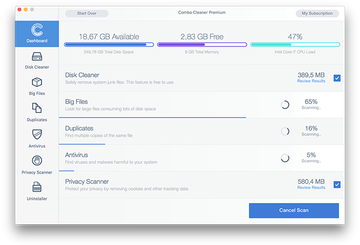
Examine the scan results. If the report says “No Threats”, then you are on the right track with the manual cleaning and can safely proceed to tidy up the web browser that may continue to act up due to the after-effects of the malware attack (see instructions above).
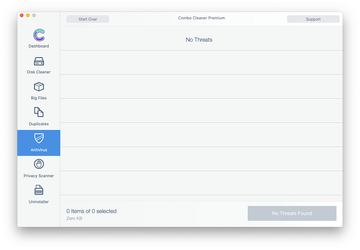
In case Combo Cleaner has detected malicious code, click the Remove Selected Items button and have the utility remove Genieo threat along with any other viruses, PUPs (potentially unwanted programs), or junk files that don’t belong on your Mac.
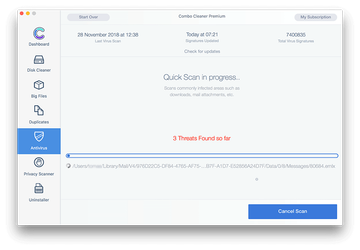
Once you have made doubly sure that the malicious app is uninstalled, the browser-level troubleshooting might still be on your to-do list. If your preferred browser is affected, resort to the previous section of this tutorial to revert to hassle-free web surfing.
